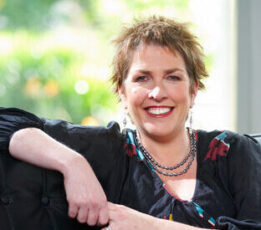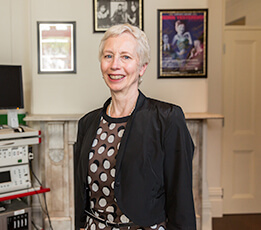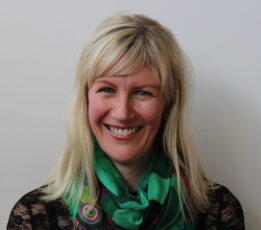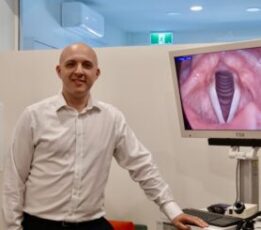FAQs
A Voice Problem:
Is an unexpected change in the sound or feeling of your voice which doesn't suit your vocal needs.
Symptoms include:- Huskiness, hoarseness, lowered pitch, decreased pitch range, difficulty projecting voice, voice breaks, throat discomfort (tickling throat clearing, pain), voice fatigue or decreased stamina.
When to seek help:-
When symptoms persist in the absence of an illness longer than two to three weeks.
Immediately if you have throat pain not associated with a cold/flu or if you are coughing up blood or have a lump in the throat.
If you have a complete loss or severe change in voice lasting longer than a few days.
If ignored, the problem can become chronic, more severe and can lead to development of pathologies like nodules.
Rarely due to cancer unless you have been a smoker and a heavy drinker.
Is commonly misdiagnosed as laryngitis and often inappropriately given repeated antibiotics or long-term use of throat gargles.
Some common causes of Voice problems
Voice use patterns (eg faulty, excessive, misuse, abuse or discuss)
Irritants - smoking (cigarettes, marijuana), dust/pollutants
Allergy
Gastro-oesophageal reflux
Stress
Medication
Vocal injury:- trauma to larynx (intubation, external hit to the neck etc)
Health issues/diseases: eg. Asthma, thyroid dysfunct ion, arthritis, hormonal imbalance or neurological problem.
Upper respiratory tract infections/inflammation
Others.
Some realities about voice problems
Majority of voice problems don’t need surgery
The majority of voice problems are avoidable and remediable
Even the most accomplished highly trained singer can develop a voice problem (same as an elite athlete is still susceptible to injury)
Voice problems can have a huge psychological impact and can also be caused by psychological distress
You don’t realize how crucial your voice is until you lose it
Other people can be unsympathetic about voice problems and tend to comment more readily than they would if someone limped, stuttered or was in a wheelchair, e.g. “Have you got a cold?” or “That’s a sexy voice”. Often they raise their own volume assuming the person also has a hearing problem.
2/3 of voice problems are due to faulty use and can lead to pathology such as swelling, nodules, cysts or bleeds in the cords.
Prevalence of Voice Problems
Virtually everyone at some stage over a one year period will experience a ‘croaky” throat whether due to a cold, fatigue or something more serious or long lasting.
Whether this becomes a problem, usually depends on the severity, duration, how much you depend on your voice for social and vocational purposes and your reaction to the symptoms.
1/3 of performers experience some problem with their voice over a 1 year period, frequently requiring them to cancel a performance or to give a sub standard performance.
High risk groups are those who use their voices a lot, those who use their voices incorrectly and those who use the extremes of their voice without relief, eg. school teachers, auctioneers, barristers, aerobics instructors, singers, actors, spruikers, sales representatives, telephonists/ call centre operators, clergy, children (yellers, choristers) etc.
Usually 30 minutes including digital videostroboscopic examination but will be dependent on the complexity of treatment planning.
No. Also there is no need to fast or to remove items of clothing
The Otolaryngologist and Speech Pathologist will bill separately for the service.
The Otolaryngologist’s fee is partly refundable from Medicare.
The Speech Pathologist’s fee is not refundable from Medicare but may be partly claimable from your health fund if you are privately insured.
We will provide the fee schedule when you make an appointment enquiry and mail you the fee schedule with confirmation of your appointment.
Stroboscopy (coined 'strobe') refers to the light source used in the endoscopy procedure which permits detailed evaluation of the vibratory characteristics of the vocal folds. The term 'scope' refers to the endoscopy procedure which can be performed trans-nasally and/or trans-orally under either normal or stroboscopic light. For more explanation, see below.
Laryngeal endoscopy with continuous/normal/plain light (laryngoscopy, nasendoscopy, videofiberoptic laryngoscopy) and laryngeal endoscopy with stroboscopic light (laryngeal videostroboscopy)
A flexible endoscope is comprised of a bundle of optical fibers, some carrying light to the larynx and others carrying the image of the larynx back to the examiner. This is usually performed trans-nasally (through the nose) and permits a view of the larynx and nasal and vocal tract structures with minimal speech interference. Local anaesthetic is often sprayed in the nostril & sometimes the mouth (topical anaesthetics such as xylocaine, cophenylcaine)
A rigid endoscope consists of a series of rods and lenses. This is performed orally (in the mouth to the back of the tongue and not down the throat) and permits an excellent view of the larynx at rest and during sustained vowel tasks. Anaethesia is not normally needed for the rigid scope at out clinic
Risks are minimal. Remote risk of adverse reactions to the scope and anaesthetic.Stroboscopy-The stroboscope emits rapid pulses of light at a rate that can be set by the examiner or controlled by the fundamental frequency of client's voice. When the flashes of light are emitted at the same frequency as vocal fold vibration, the vocal folds appear to be motionless (unless there is irregular vibration). When the light is emitted at frequencies less than the frequency of vibration, a slow motion effect is produced.The examiner does not see fine details of a single cycle of vibration; the image is a composite picture of small sections from several cycles.
Stroboscopic light can be used with either the rigid or flexible endoscope, although the rigid scope offers a better view because of the greater magnification.
Vibratory behaviour is assessed using a sustained vowel, usually /i/. Vibratory behaviour cannot be assessed using connected speech or with rapidly changing pitch since it relies on tracking of the fundamental frequency.
Stroboscopy may be requested by your current ENT Specialist to provide additional information to help with diagnosis and management of your voice problem.
Stroboscopy is invaluable for accurate diagnosis of vocal pathologies and issues with vocal health, efficiency and endurance.
At The Melbourne Voice Analysis Centre we see people from all walks of life who happen to have a voice complaint. Our specialised stroboscopy equipment provides more detailed information regarding the vocal folds and vibration than a standard light scope. This therefore increases diagnostic accuracy and improved decision-making regarding the optimal management choices for many laryngeal conditions. Stroboscopy is therefore applicable to all voice users who develop hoarseness or voice concerns and may be recommended by other ENT specialists as a tertiary referral for further diagnostic or management purposes.
Yes, you will be fine to use your voice after the procedure. Many times there is no anaesthetic used so you can speak and even sing straight away. On those occasions when anaesthetic is used, you may wish to wait for 20 minutes before using your voice for tasks such as singing as your throat will be numb.
Yes, singing, acting and voice teachers and speech pathologists are encouraged to attend. This ensures that the most effective approach to voice assessment and holistic management is provided.







